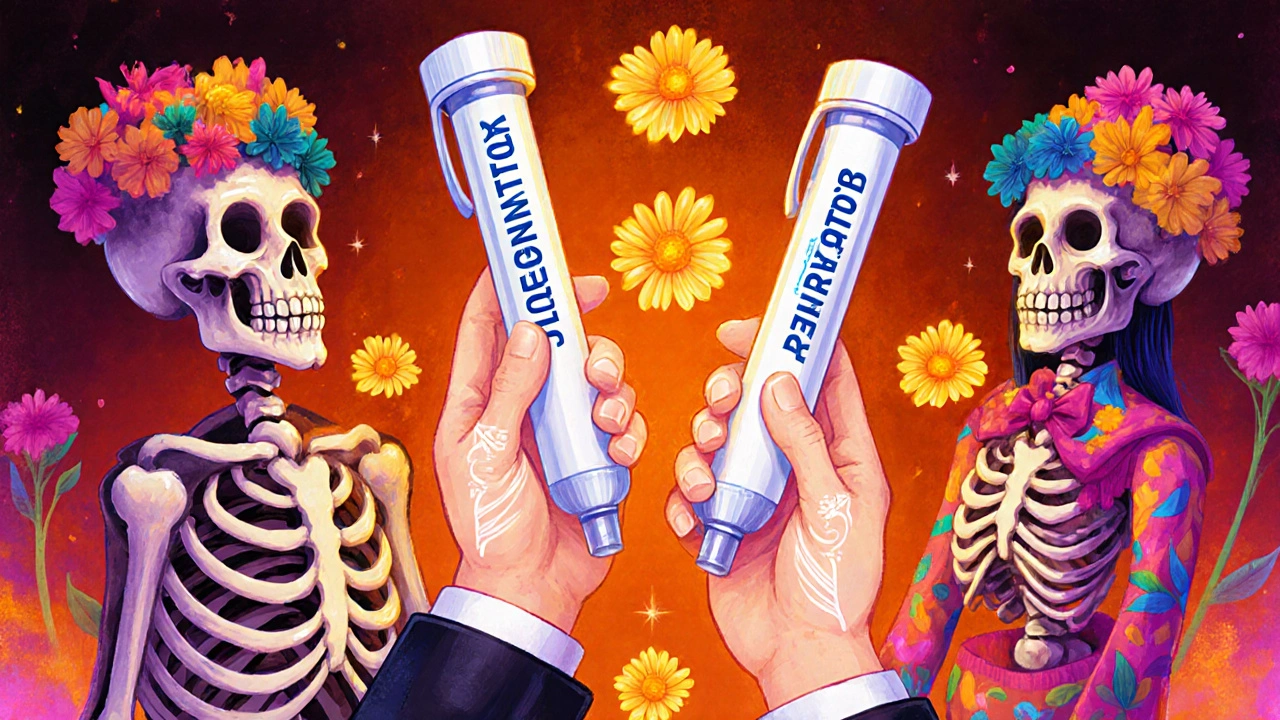
When you’ve been on a biologic drug for years - maybe infliximab or adalimumab - and your doctor says it’s time to switch to a biosimilar, it’s natural to feel uneasy. You’ve got your routine down. Your symptoms are stable. You know how your body reacts. So what happens when you swap it out for something that sounds similar but isn’t quite the same? The short answer: for most people, nothing changes. But for some, the shift brings unexpected challenges - not because the medicine doesn’t work, but because of how we think about it.
What Exactly Is a Biosimilar?
A biosimilar isn’t a generic. That’s the first thing to understand. Generics are exact copies of small-molecule drugs like aspirin or metformin. Biosimilars are copies of biologic drugs - complex proteins made from living cells. Think of it like trying to recreate a handmade oak table. Two tables might look identical, have the same weight, same finish, same function - but if you examine the grain under a microscope, you’ll see tiny differences. That’s biosimilarity.
The U.S. Food and Drug Administration (FDA) and the European Medicines Agency (EMA) require biosimilars to match the originator in quality, safety, and effectiveness. No clinically meaningful differences. That’s not just a slogan - it’s backed by over 120 clinical studies. The approval process isn’t light. Companies must run more than 250 analytical tests comparing the molecule’s structure, purity, and function. Then they test it in healthy volunteers, track how the body absorbs and processes it, and finally, test it in patients with the same condition the original drug treats.
The first biosimilar in the U.S. was Zarxio (filgrastim-sndz), approved in 2015. Since then, 37 biosimilars have cleared FDA approval, mostly targeting inflammation - drugs like infliximab and adalimumab. These are used for rheumatoid arthritis, Crohn’s disease, psoriasis, and more. In Europe, biosimilars make up 67% of the filgrastim market. In the U.S., adoption is slower - only 24% for infliximab - mostly because of patent battles and insurance rebates that make originators cheaper than they should be.
What Happens When You Switch?
The biggest concern? Will your disease flare up? Will you get sicker?
Real-world data says no - not for most. The NOR-Switch study, which followed 481 patients with inflammatory arthritis or bowel disease, tracked those who switched from originator infliximab to its biosimilar CT-P13. After one year, 52.6% were still on the biosimilar. The group that stayed on the originator? 60%. That 7.4% gap? Not statistically significant. In other words, switching didn’t cause more people to stop treatment.
Other studies back this up. In a Danish study of psoriasis patients switching from adalimumab to its biosimilar, drug retention after one year was 79% for the biosimilar versus 81.3% for the originator. In inflammatory bowel disease, a study switching patients from one biosimilar (CT-P13) to another (SB2) found 90.6% stayed in remission. Fecal calprotectin - a marker of gut inflammation - didn’t change. Trough levels (the amount of drug left in your blood between doses) stayed steady.
Even when patients switched multiple times - originator to biosimilar, then to another biosimilar - immunogenicity (the body making antibodies against the drug) didn’t spike. A 2022 study in 140 patients showed only 3 cases of new antibodies per 100 patient-years. That’s rare. And crucially, those antibody spikes didn’t lead to more side effects or loss of response.
Why Do Some People Stop Taking It?
If the science says it’s safe, why do 4% to 18% of patients discontinue after a switch?
It’s rarely because the drug stopped working. It’s because they felt like it did.
This is the nocebo effect - the opposite of placebo. If you believe something will make you feel worse, your brain can make it happen. A 2021 study in Frontiers in Psychology found that 32.7% of patients reported new or worsening symptoms after switching - even though their blood tests, disease scores, and doctor assessments showed no change.
Reddit threads from patients with rheumatoid arthritis are full of stories: "I felt it in my joints right away," "My skin got worse," "I just knew it wasn’t the same." Many of these patients had stable disease for years. Their labs were fine. Their doctors said everything looked normal. But the fear of change, the unfamiliar packaging, the new needle - it triggered real physical sensations.
There are also real, but less common, reasons to stop:
- Injection site reactions: redness, itching, swelling - reported in up to 7.8% of adalimumab biosimilar users.
- Perceived loss of efficacy: patients think their pain is returning, even if objective measures don’t support it.
- Multiple switches: switching from originator to biosimilar A, then to biosimilar B, increases confusion and anxiety. One Spanish study saw a 15.3% discontinuation rate after two biosimilar switches in IBD patients, compared to 8.7% in those who didn’t switch.
Actual drug failure due to immunogenicity? Only about 1.7 events per 100 patient-years. That’s lower than the natural rate of losing response to the originator - which is about 20% per year in IBD patients, regardless of what version they’re on.
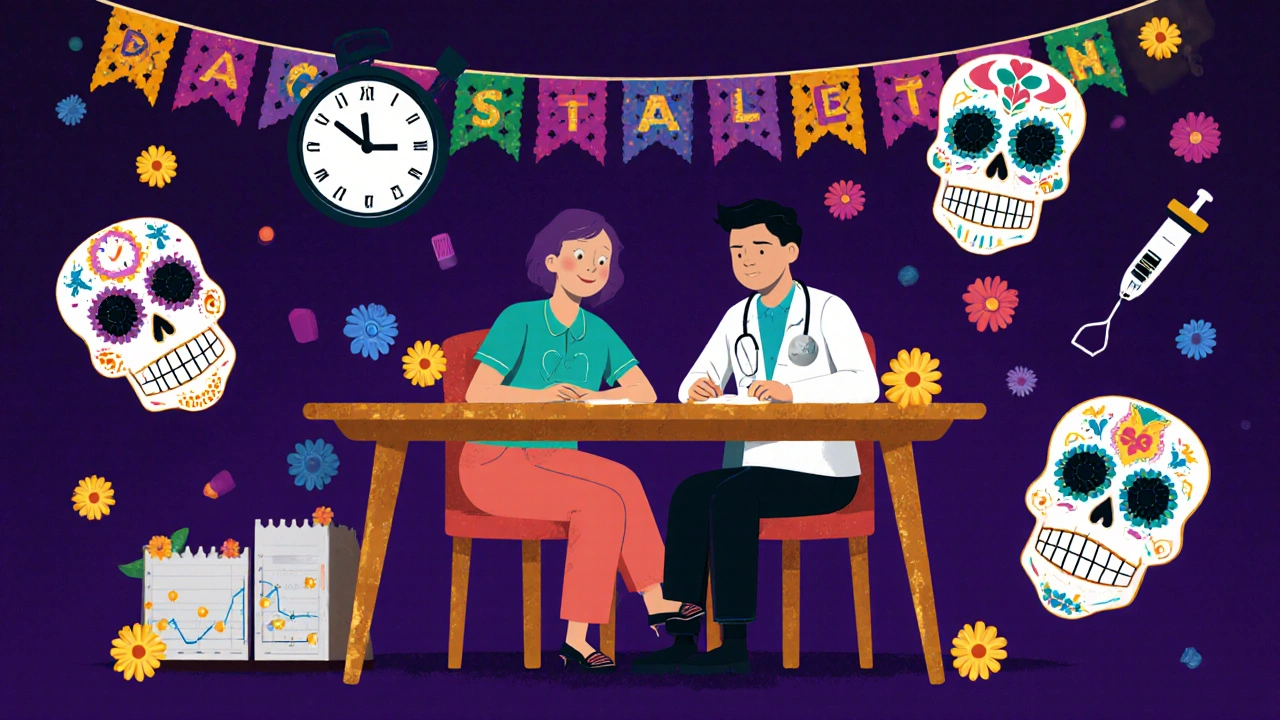
Who Shouldn’t Switch?
Switching isn’t for everyone. Experts agree: if your disease is active, unstable, or recently flared - don’t switch. If you’ve had a serious reaction to the originator, proceed with caution. If you’re pregnant or planning to be, talk to your doctor. Some guidelines recommend staying on the same product through pregnancy.
Patients on high doses, or those who’ve failed multiple biologics, may also be better off staying put. The data shows switching works best in people with low disease activity - think DAS28 scores under 3.2 in rheumatoid arthritis, or PASI scores under 5 in psoriasis.
And if you’ve already had a bad experience with a biosimilar - even if it was due to the nocebo effect - don’t force yourself back. Trust matters. If you’re anxious, switching can do more harm than good.
How to Make the Switch Work
Switching doesn’t have to be scary. When done right, it’s smooth - and saves money for the whole system.
The PERFUSE study showed that with proper support, discontinuation rates dropped from 18% to just 6.4%. Here’s what helped:
- Pre-switch counseling: A 20-minute conversation with your doctor or nurse. Explain what biosimilars are. Show the data. Answer questions. Don’t just hand over a prescription.
- Shared decision-making: Ask the patient what they’re worried about. Don’t assume. Sometimes it’s the needle size. Sometimes it’s the color of the pen. Listen.
- Post-switch monitoring: Check in at 4, 8, and 12 weeks. Use objective tools - DAS28, PASI, fecal calprotectin - not just how you feel.
- Consistent branding: If you’re switching from one biosimilar to another, try to keep the same delivery device. A different pen or syringe can trigger anxiety.
Pharmacists can help too. In the U.S., the FDA now allows interchangeable biosimilars - meaning a pharmacy can substitute them without asking the doctor. Cyltezo, an interchangeable adalimumab biosimilar, got approved in 2024. But even with interchangeability, patient consent matters. Many health systems now require opt-in consent before switching.

Why Does This Matter?
Biosimilars aren’t just cheaper versions. They’re lifelines.
Biologics cost $20,000 to $40,000 a year. Biosimilars? 15% to 35% less. In 2023, Humira biosimilars launched at a 35% discount. That’s tens of thousands in savings per patient. In the UK, NHS England estimates biosimilars could save £1.2 billion by 2030.
Those savings mean more people can get treated. Right now, many can’t afford biologics. Switching opens the door. It also funds innovation - the money saved on one drug can pay for research into the next.
But it only works if patients trust it. If fear drives people off treatment, we lose the benefit. That’s why education isn’t optional. It’s essential.
The Bottom Line
Switching from an originator biologic to a biosimilar is safe for most people with stable chronic conditions. The science is clear. The data is solid. You won’t get sicker. You won’t lose response - unless your body was already going to.
But safety isn’t just about molecules. It’s about trust. It’s about how you’re told. It’s about whether your voice is heard.
If you’re being asked to switch, ask questions. Ask for data. Ask for time. Ask for support. If your doctor says it’s safe, believe them - but only if they’ve taken the time to explain why.
And if you’ve switched and feel off? Don’t assume it’s the drug. Talk to your team. Get your labs checked. Give it 8 to 12 weeks. Sometimes, the body just needs to adjust - not to the medicine, but to the idea of it.
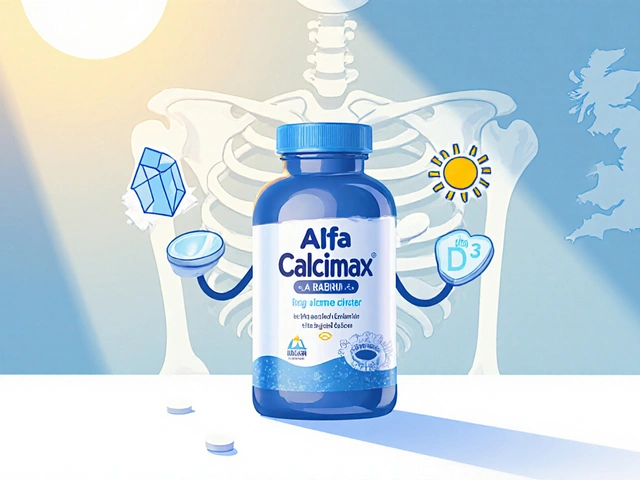


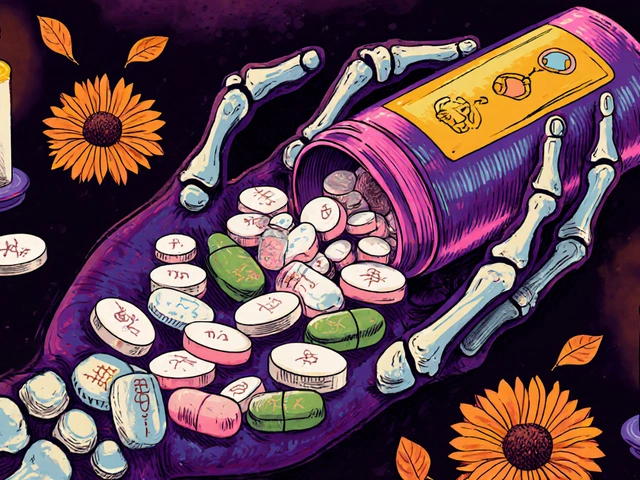
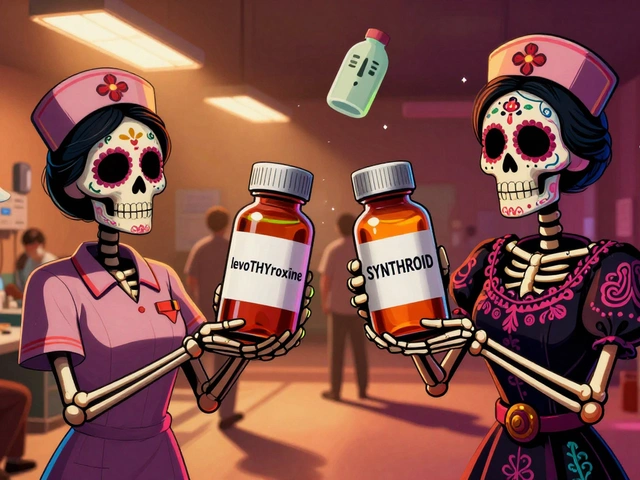
There are 11 Comments
mike tallent
I switched from Humira to Cyltezo last year and honestly? My joints haven’t felt this good in 5 years. 😊 The pen is a little different, sure - but my insurance saved me $1,200/month. My doc walked me through the data, and I trusted the science. No flare-ups, no weird side effects. Just cheaper relief. 💪
vinod mali
data says safe. body says different. i know people who switched and got worse. not placebo. real pain. doctors ignore that
Jennie Zhu
It is imperative to underscore that the pharmacokinetic and pharmacodynamic equivalence profiles of biosimilars, as validated through rigorous analytical comparability exercises - including high-performance liquid chromatography, mass spectrometry, and bioassays - demonstrate non-inferiority in clinical outcomes. The FDA’s biosimilar approval pathway mandates demonstration of no clinically meaningful differences in safety, purity, and potency. Thus, therapeutic substitution is not merely permissible, but evidence-based.
Kathy Grant
I used to think switching was just about money… until I sat with my friend who cried because she felt like her body betrayed her after switching. It’s not just molecules - it’s identity. That drug was her anchor. The needle changed. The pen changed. The name changed. And suddenly, she felt like she lost part of herself. The science says it’s the same. But the heart? The heart doesn’t read clinical trials. It reads fear. And sometimes, fear feels realer than facts.
Jennifer Howard
Are we really supposed to believe these "biosimilars" aren't just knockoffs pushed by Big Pharma to keep profits up? The FDA is corrupted. Look at the Vioxx scandal. They approved dangerous drugs before. Why trust them now? Also, why do all the studies say "no clinically meaningful difference"? That’s not the same as "identical." And why do they always say "most people"? Who are the "some"? They’re hiding something.
Abdul Mubeen
Interesting how the article conveniently omits the fact that biosimilars are often manufactured in countries with lax regulatory oversight. China, India, Russia - where quality control is anecdotal at best. The FDA may say it's safe, but who’s auditing the labs? And why are there no long-term cancer risk studies? You think they’d want to know if a biosimilar increases lymphoma risk after 15 years? They don’t. They want you to switch.
Joyce Genon
Let’s be real - this whole biosimilar push is just a cost-cutting scheme disguised as medical progress. I’ve seen patients who were stable for years suddenly get worse after switching, and then the doctors blame it on "nocebo" like it’s some psychological weakness. No, it’s not. It’s because these aren’t identical. The excipients are different. The manufacturing process alters glycosylation patterns. You can’t replicate a living molecule like it’s a Lego set. And now we’re forcing people to switch multiple times? That’s not science - that’s corporate roulette. And the worst part? The patients are the ones paying the price - in pain, in anxiety, in lost time. The system doesn’t care. It just wants the next rebate.
John Wayne
Biologics are overrated. If you need a $40k/year drug to function, you’ve already lost the game. Biosimilars? Fine. But why not try diet, fasting, or just… not being a hypochondriac? This whole industry thrives on fear and dependency. The fact that people panic over a different pen says more about modern medicine than any study ever could.
Julie Roe
My cousin switched from Remicade to Inflectra and had zero issues - but she was terrified. So her rheumatologist scheduled a 30-minute video call before the switch, sent her a video explaining the science, and checked in weekly for two months. That’s what made the difference. Not the drug. Not the price. The care. When people feel seen, they don’t panic. When they feel like a number on a spreadsheet? That’s when the nocebo kicks in. We need more doctors who listen, not just prescribe. This isn’t just about molecules - it’s about humanity.
jalyssa chea
you think its safe but what about the kids who get autism from biosimilars? i know a lady whose son got diagnosed after she switched and now he cant talk and its all because of the preservatives and the big pharma is covering it up
Gary Lam
Yo, I’m from LA and my cousin in Mumbai switched to a biosimilar and saved enough to send his kid to college. Meanwhile, my cousin in Ohio got sued by his insurance for "refusing" to switch. Same drug. Different continents. Same body. Different systems. This isn’t about science - it’s about who gets to live without financial ruin. So yeah, switch. But don’t let the system make you feel guilty for being scared.
Write a comment
Your email address will not be published. Required fields are marked *